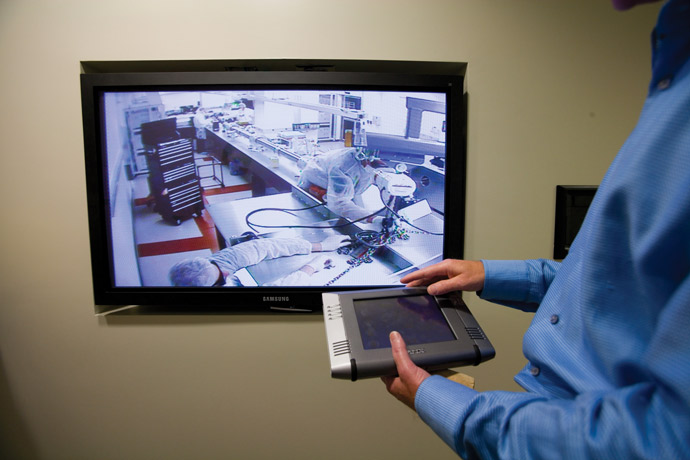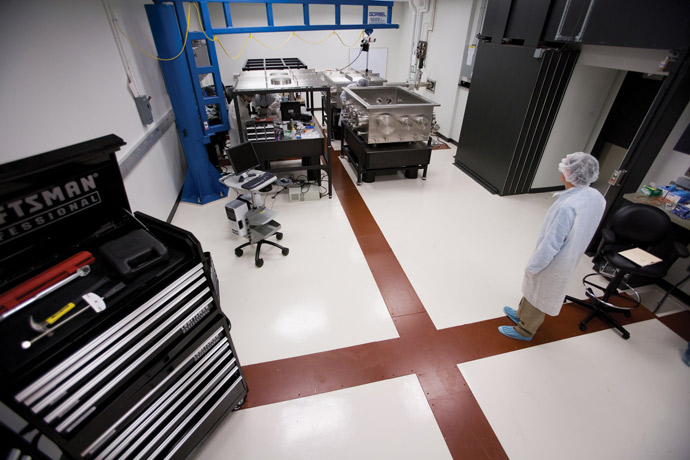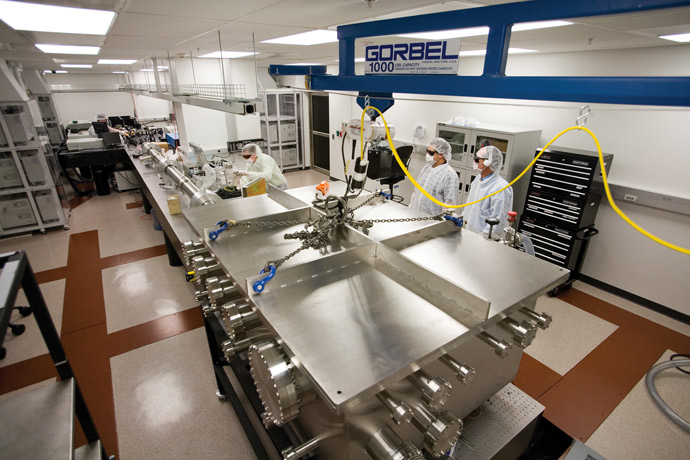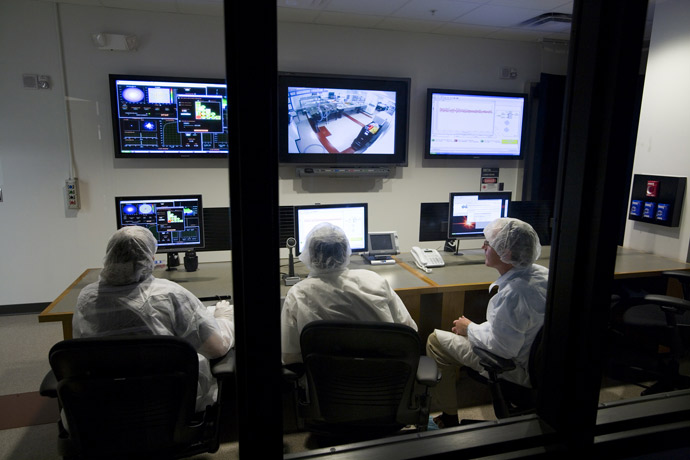In the late 1940s, physicist Ted Jorgenson came to UNL from the Manhattan Project -- which created the first nuclear devices -- and built a particle accelerator. Because it generated radiation, the accelerator was put into the sub-basement of Behlen Laboratory, surrounded by earth on all sides and with three-foot-thick concrete walls to contain the radiation.
Today, the facility is a 5,000-square-foot laboratory of white walls and stainless steel, built to the highest technical specifications. The temperature in the laboratory is a steady 70 degrees and cannot vary more than half a degree over a week's time. The floor is vibration-isolated from the rest of the building, so even a jackhammer running upstairs causes no vibration for Diocles. And the laser laboratory is clean to the Class 10,000 level, meaning there are no particles in the space large enough to damage the laser. Diocles is so powerful that all of its functions are remotely controlled to minimize the chance of exposure to damaging beams or radiation.
How does the Diocles laser work?
First, electricity from wall plugs is stored in electrical capacitors. The electricity then fires flash lamps (powerful light bulbs) to produce incoherent light, which pumps the laser gain medium (Sapphire). The Sapphire atoms become highly excited and emit coherent laser light. Mirrors are used to repeatedly amplify the light in the Sapphire. In the Diocles laser, short and powerful bursts of red light may be fired ten times per second.
Virtual Tour
Corridor of Powers

Even the floor of the corridor makes science come alive. Umstadter designed it as a "Corridor of Powers" with a computer-generated floor tile mosaic that represents the powers-of-ten progression, basic to so many scientific phenomena, including the laser's gain in power as it moves through its amplifier chain. Wall plaques explain the powers-of-ten, their names and symbols, and scientific notation.





